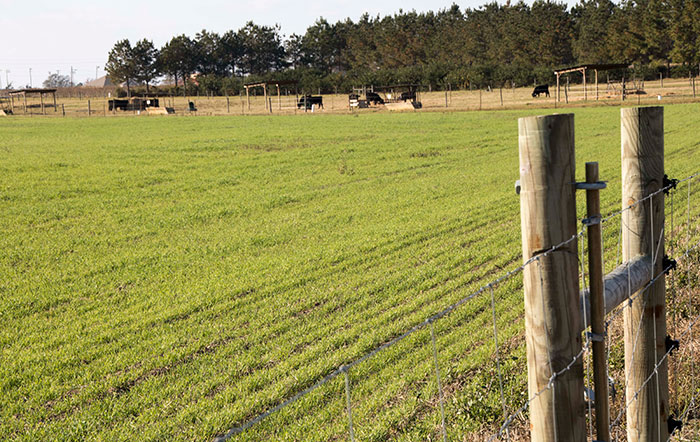
Grazing winter annuals in the South reduces the need for storing winter feed and providing additional supplements; however, their effectiveness and productivity hinge largely on providing a nutritional base and implementing well-planned grazing strategies.
“It is amazing how many producers will spend money on overseeding large acreages but will not pay for a pound of nitrogen,” says Georgia extension agent Carole Knight in a University of Georgia Forage Team newsletter. “Why spend money on seed and planting costs if you are not going to manage this investment for optimum production?”
Ideally, nitrogen should be applied as winter annuals are planted. The initial 40 to 50 pounds of nitrogen per acre increases tillering, or thickening of the stand, which allows for earlier grazing, Knight explains. To maintain stands throughout the winter months, nitrogen must be applied again in mid-January to early February. Knight recommends 40 to 50 pounds of nitrogen per acre if pastures are heavily utilized; however, this rate can be decreased if forages are not needed.
“If winter annual legumes were used and they contribute 30 to 40 percent or more of the stand, then no more than 25 pounds of nitrogen per acre will be necessary,” Knight says.
Ryegrass, grown alone or used in a mix, will require an additional application of 40 to 50 pounds of nitrogen per acre in the early spring due to its longevity. Knight reminds producers that late ryegrass production can lower bermudagrass yields by 30 to 50 percent. If bermudagrass depletion is an issue, producers may choose to reduce or cut out nitrogen entirely.
“Make sure soil pH is in the right range so that plant roots can utilize that nitrogen. In addition, low phosphorus or potassium in the soil will limit the growth of the winter annuals even if plenty of nitrogen is available,” Knight says.
Plants should be well established before allowing cattle to graze. Knight explains that a more developed root system will enable plants to withstand droughts and boost production over time. Grow cool-season annuals to a height of 6 to 8 inches before grazing; then don’t graze shorter than 2 to 3 inches, she adds. Although stands will survive early grazing, they will never reach their full season-long potential.
Winter annuals are best suited for growing cattle such as replacement heifers and stockers. That said, mature cows and pastures can thrive with proper management such as limit grazing. While this is typically done on an hourly basis, grazing pastures every other day can effectively accomplish the same with less available labor.
“Allowing access to the winter pasture for two hours each day will allow cows to fill up on high-quality forage and will minimize trampling and wasteful consumption,” Knight concludes.

Lauren Peterson served as the 2017 Hay & Forage Grower summer editorial intern. She is from Wyanet, Ill., and currently attends Kansas State University where she is pursuing a degree in agricultural communications and journalism. While at school, Lauren works at the KSU dairy farm and is an active member of the Horseman’s Association.

